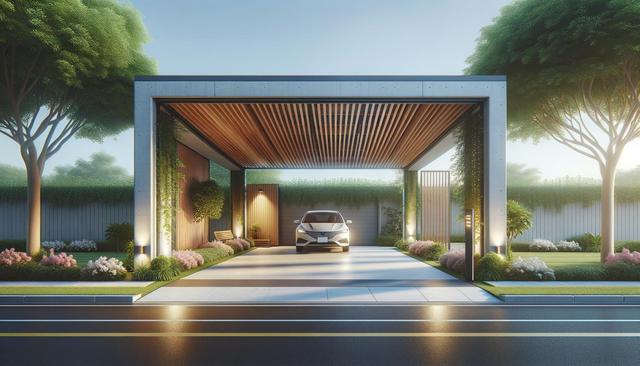What Is a Carport and How Does It Work?
A carport is a covered structure typically used to offer limited protection to vehicles, primarily from sun, rain, and snow. Unlike a traditional garage, a carport usually does not have four walls—instead, it may have one or two walls or be completely open-sided. This open design makes carports more cost-effective and easier to install while still offering substantial protection. Carports can be attached to the side of a house or constructed as free-standing units, giving homeowners flexibility depending on their space and needs.
Carports work by providing a roof that shields vehicles from direct exposure to environmental elements. The materials used for the roof can range from metal and polycarbonate to fabric or wood, depending on the desired durability and aesthetics. While they don’t offer the full security of a garage, they do prevent weather-related damage such as sun fading, hail dents, or snow accumulation on windshields.
Benefits of Installing a Carport
Homeowners often choose carports for their practicality and affordability. They offer many advantages that make them a worthwhile investment for vehicle protection and general outdoor coverage. Some of the most appreciated benefits include:
- Cost-effectiveness: Carports are generally less expensive to build than garages, making them accessible to more homeowners.
- Ease of installation: With fewer structural components, carports can often be set up in a shorter time frame and with less labor.
- Versatility: In addition to sheltering vehicles, carports can double as outdoor workspaces, storage areas, or shaded patios.
- Improved ventilation: The open design allows for air circulation, which helps prevent moisture buildup and rust on your vehicle.
These benefits make carports an appealing option for those looking to protect their vehicles without committing to a full-scale garage project.
Types of Carports to Consider
There are various carport styles available to suit different needs and preferences. Choosing the right type depends on several factors such as location, climate, and intended use. Here are some common types:
- Attached carports: These are built alongside an existing structure, such as a house, and share one wall. They’re suitable for homeowners with limited backyard space.
- Freestanding carports: These structures stand alone and can be placed anywhere on the property, offering flexibility in positioning.
- Metal carports: Known for their durability, metal carports resist rust and are ideal for areas with harsh weather.
- Wooden carports: These offer a more traditional look and can be customized for aesthetics but may require more maintenance.
- Portable carports: Featuring a lightweight frame and fabric cover, these are ideal for temporary use or renters.
Each type has its own pros and cons, so it’s important to consider your specific requirements before making a decision.
Key Considerations Before Installation
Installing a carport involves more than just selecting a design. There are several practical and regulatory factors to take into account to ensure the structure is safe, effective, and compliant with local laws. Some key considerations include:
- Local building codes: Check with your municipality to determine if a permit is required and what regulations must be followed.
- Material choices: Consider factors like durability, maintenance, and cost when choosing materials for the frame and roof.
- Foundation: Depending on the size and type of the carport, you may need a concrete slab or footings to support the structure securely.
- Drainage and slope: Ensure the area where you plan to install the carport has proper drainage to prevent water pooling.
- Size and clearance: Make sure the carport is large enough to accommodate your vehicle(s) with room for movement and access.
Taking time to plan these aspects in advance can save time, money, and potential complications during installation.
Maintenance and Longevity of Carports
While carports are generally low-maintenance, regular upkeep can extend their lifespan and maintain their functionality. The type of materials used will largely determine the maintenance routine. Metal carports, for instance, may need occasional rust-proofing and cleaning, while wooden carports might require staining or sealing to protect against moisture and pests.
Here are a few general maintenance tips:
- Inspect the structure regularly for signs of wear, such as rust, rot, or loose bolts.
- Clean the roof and supports to remove debris, especially after storms or seasonal changes.
- Repaint or reseal surfaces as needed to maintain appearance and durability.
- Ensure the foundation remains level and free of cracks or erosion.
By following a simple maintenance schedule, homeowners can ensure their carports provide reliable coverage for many years, making them a valuable addition to any property.
Conclusion: Is a Carport Right for You?
Carports offer a practical and versatile solution for vehicle protection and additional outdoor coverage. Whether you’re looking to shield your car from the elements, create a shaded workspace, or add value to your home, a carport can meet a variety of needs without the investment of a full garage. With various styles, materials, and configurations available, there’s likely a carport option that fits your property and lifestyle. Taking time to assess your space, local regulations, and desired features can help you make an informed decision that provides lasting benefits.




Leave a Reply